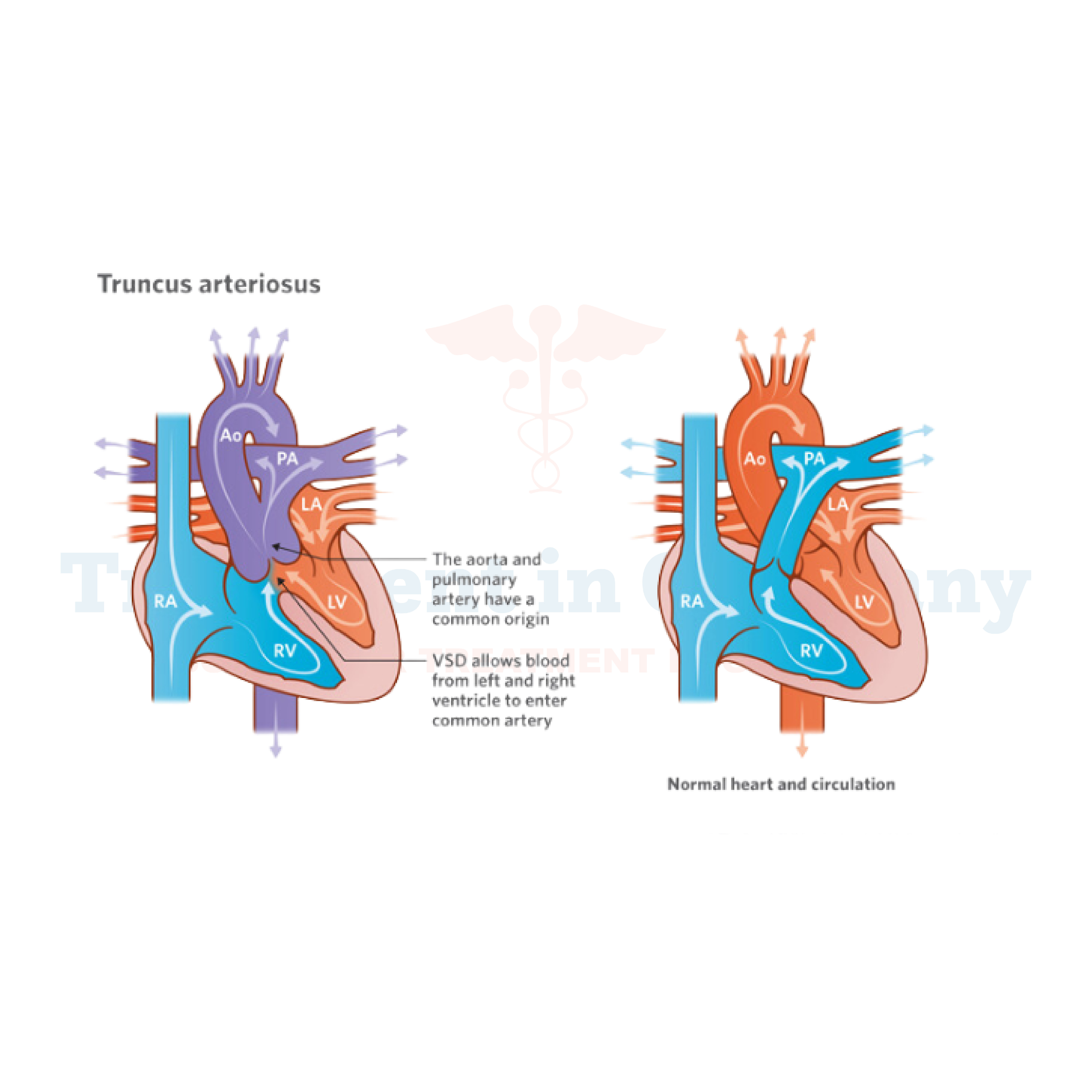What is Truncus Arteriosus?
Truncus arteriosus is a congenital heart defect where a single large blood vessel, called the truncus arteriosus, arises from the heart instead of the usual two separate vessels (pulmonary artery and aorta).
This condition occurs during fetal development when the heart doesn't form correctly, leading to significant implications for blood circulation.
Side Effects of Truncus Arteriosus
The main side effects of truncus arteriosus result from the abnormal circulation of oxygen-rich and oxygen-poor blood. This can lead to:
If left untreated, truncus arteriosus can cause serious complications such as pulmonary hypertension, respiratory infections, and heart rhythm abnormalities.
Diagnosis of Truncus Arteriosus
Truncus arteriosus is typically diagnosed either during pregnancy through fetal echocardiography or shortly after birth using a combination of physical exams, imaging tests (such as echocardiogram and cardiac MRI), and possibly genetic testing.
These diagnostic tools help doctors understand the specific anatomy of the heart and the severity of the defect.
Potential Treatment of Truncus Arteriosus
The treatment of truncus arteriosus almost always requires surgical intervention. The goals of surgery are to:
👉 Contact us for further information and receive a complimentary consultation.

.webp)
.webp)
 (1).webp)
 (1).webp)

.webp)
.webp)
 (1).webp)
 (1).webp)
